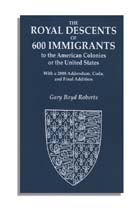
Are Your Related to “Good King Wenceslaus”?
[av_image src=’https://genealogical.com/wp-content/uploads/2018/11/9780806361000-223×300.jpg’ attachment=’5619′ attachment_size=’medium’ align=’right’ styling=” hover=’av-hover-grow’ link=’manually,https://library.genealogical.com/printpurchase/Wo9Ao’ target=’_blank’ caption=’yes’ font_size=” appearance=’on-hover’ overlay_opacity=’0.4′ overlay_color=’#000000′ overlay_text_color=’#ffffff’ animation=’no-animation’ av-mini-hide=’aviaTBav-mini-hide’ admin_preview_bg=” av_uid=’av-4h2qc1′]
View Book Details
[/av_image]
Millions of us sing the praises of “Good King Wenceslaus” every Christmas, but how many of us know anything about Wenceslaus the man and the saint. The following account, adapted from pp. 555-556 of Mr. Alan J. Komon’s book A Who’s Who Of Your Ancestral Saints, fills in the missing details;
St. Wenceslaus I
Duke of Bohemia
Wenceslaus (in Czech: Vaclav) was born around 903 and was the son of Ratislav, the Duke of Bohemia, and his wife Drahomir of Stodar. Wenceslaus married young, but his wife’s name has been lost.
Christianity had been introduced into Bohemia in the time of Wenceslaus’ grandparents, but two generations later it was still not deeply rooted. Most of Wenceslaus’ family – such as his grandparents Borivoy I and Ludmilla and his father Ratislav – were sincere converts. So was Wenceslaus, who had been devoutly Christian since he was very young. His mother Drahomir was not, and in the whole country many nobles and common people were still actively pagan.
Ratislav died fighting the Magyars before Wenceslaus was old enough to succeed him, which made Drahomir regent of the kingdom for a time. As ruler, she repudiated Christianity and tried to wipe it out by murdering Ludmilla, expelling priests, and persecuting Christians. She also tried and failed to re-convert Wenceslaus.
All these measures forced Wenceslaus to take action. He claimed his throne early and then proceeded to exile Drahomir, recall the priests, invite missionaries into Bohemia, restore support to the churches, and work to strengthen Christianity generally.
Wenceslaus’ efforts weakened the pagan revolt which Drahomir had led but did not kill it completely. The new leader of the pagan reaction was Wenceslaus’ brother Boleslaw, who had grown up a pagan and who would succeed to the throne if anything should happen to Wenceslaus. To prevent a German invasion of Bohemia, in 929 Wenceslaus made an act of submission to the German ruler Henry “the Fowler.” This plus the spread of Christianity under Wenceslaus convinced Boleslaw that it was time to take further action.
Boleslaw invited his brother to come and celebrate a Christian feastday with him. Wenceslaus came, and on 28 September 929 the two of them were walking to the church of Alt Bunzlau. At the doorway of the church, Boleslaw and his men turned on Wenceslaus, drew their swords, and murdered him. Wenceslaus’ last words were, “Brother, may God forgive you.” Boleslaw assumed the throne and is remembered as Boleslaw “the Cruel.”
Wenceslaus was immediately considered a saint. He became the patron saint of the Czech Republic, and in the English-speaking world he is the subject of the Christmas carol “Good King Wenceslaus.”
His Line
[av_image src=’https://genealogical.com/wp-content/uploads/2018/11/hisline.jpg’ attachment=’5618′ attachment_size=’full’ align=’center’ styling=” hover=” link=” target=” caption=” font_size=” appearance=” overlay_opacity=’0.4′ overlay_color=’#000000′ overlay_text_color=’#ffffff’ animation=’no-animation’ admin_preview_bg=” av_uid=’av-2bcdld’][/av_image]
Although space doesn’t allow us to show all subsequent connections, existing scholarly research has proven the line of Judith of Bohemia and her husband Ladislas to the kings of England and beyond. For example, by the year 1152, their progeny had married with the Spanish house of Castille, and in 1236, with the union of Henry III, King of England and Eleanor of Provence, the Plantagenets. When Herbert Pelham of County Suffolk, England (and the future first treasurer of Harvard College) emigrated to New England in 1639/40, the line of St. Wenceslaus would make its appearance in North America.
The point of this article, and another in next week’s “Genealogy Pointers,” is to illustrate how you can utilize A Who’s Who Of Your Ancestral Saints, in conjunction with the existing literature of royal and noble genealogy, to prove a descendancy to one of the 275 Holy Men and women Mr. Koman has identified. It’s that simple.
For more information about A Who’s Who Of Your Ancestral Saints, please CLICK HERE.
Recent Blog Posts



